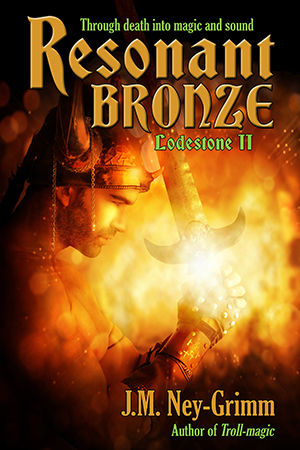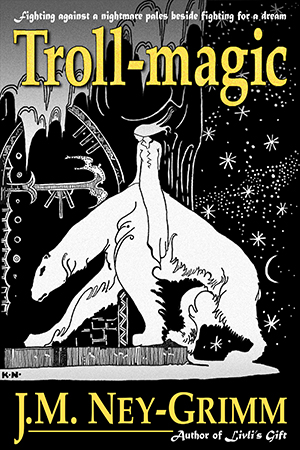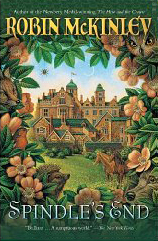I always thought I knew.
I’d be writing along, feeling the rhythm of my story, and the impulse – to end my paragraph and begin another – struck.
Bingo! I’d hit the hard return on my keyboard.
And write some more, until the next same impulse blared.
It turns out I was not “hearing” all the calls for hard returns that were actually coming my way.
Here’s a case in point.
Check out this passage. Or, I should say, try to! You may not find it to be readable!
(Extenuating circumstances caused it to be a very dense package of prose indeed.)
But here it is:
Abruptly she returned to herself. Where had she been? The desert spaces of a dream, hunting as a lioness should? She didn’t know. But this dim-lit vault looked different through waking eyes than dreaming ones. Why didn’t they sweep the floors? Sand lay on the flat stone expanse in patches or dusty sparkles. The whole complex cried out for a scouring. Rust coated the iron bars of the cages, from their tops, anchored in the granite ceiling, to their bases, sunk into rock. Dung decorated the corners. And the carcass of her last meal rotted against the bars separating her from the jackal next door. That black-coated beast gnawed at the bloody remains, his snout poked through a gap. Fah! She lifted her forepaw fastidiously to lick it clean. Movement diagonally across the broad corridor caught her eye. Another feline – a cheetah, not a lion – paced. Back and forth. Back and forth. Prowling restlessly. This is no place for me and mine. I, who carry the sun in my eyes by night.
Bottom line?
This is way too much to put in one paragraph. Most readers won’t put up with it! With reason on their side.
I was convinced that I’d never naturally stray so far. And I’m still sticking to that claim. 😀 But, nonetheless, I err in that direction.
The old truism that a paragraph should consist of ideas that hang together is largely correct. My problem is that I’m good at seeing the connections between things. So I tend to think more ideas go together than most people do. And that can result in unwieldy paragraphs.
I was scribing the above passage for a workshop. And my assignment called for one paragraph describing a scene via the visual sense. To strictly abide by the instructions, I needed to prune, creating a sparser paragraph.
Thing was…I could hear Bastet’s voice so clearly in my head. And I couldn’t bear to cut her off! My storyteller self warred with my student self, and the result was not pretty!
When the workshop teacher chided me on my quadruple-chocolate-mousse-tort of a prose passage, I apologized. And offered up a more reasonably paragraphed version. Which I’ll show you below. Check this version out:
Abruptly she returned to herself. Where had she been? The desert spaces of a dream, hunting as a lioness should? She didn’t know. But this dim-lit vault looked different through waking eyes than dreaming ones.
Why didn’t they sweep the floors? Sand lay on the flat stone expanse in patches or dusty sparkles. The whole complex cried out for a scouring. Rust coated the iron bars of the cages, from their tops, anchored in the granite ceiling, to their bases, sunk into rock. Dung decorated the corners. And the carcass of her last meal rotted against the bars separating her from the jackal next door. That black-coated beast gnawed at the bloody remains, his snout poked through a gap.
Fah! She lifted her forepaw fastidiously to lick it clean.
Movement diagonally across the broad corridor caught her eye. Another feline – a cheetah, not a lion – paced. Back and forth. Back and forth. Prowling restlessly. This is no place for me and mine. I, who carry the sun in my eyes by night.
Better, right?
Defintely more readable. And closer to my natural paragraphing tendencies.
But! Still too much. Because…check this out!
My teacher agreed it was indeed better, but showed me how he would have broken the paragraphs, if he were writing those very words for a medium pace. My words. Not one changed, but the paragraph breaks added. Here it is:
Abruptly she returned to herself.
Where had she been?
The desert spaces of a dream, hunting as a lioness should? She didn’t know. But this dim-lit vault looked different through waking eyes than dreaming ones.
Why didn’t they sweep the floors?
Sand lay on the flat stone expanse in patches or dusty sparkles. The whole complex cried out for a scouring. Rust coated the iron bars of the cages, from their tops, anchored in the granite ceiling, to their bases, sunk into rock. Dung decorated the corners.
And the carcass of her last meal rotted against the bars separating her from the jackal next door. That black-coated beast gnawed at the bloody remains, his snout poked through a gap.
Fah! She lifted her forepaw fastidiously to lick it clean.
Movement diagonally across the broad corridor caught her eye. Another feline – a cheetah, not a lion – paced.
Back and forth.
Back and forth.
Prowling restlessly.
This is no place for me and mine. I, who carry the sun in my eyes by night.
When I read this, fireworks went off in my head.
This. This! This.
Yes. It was right. It conveyed what it was meant to convey. It conveyed what I wanted it to convey.
Can’t you hear Bastet’s voice in your head now? So much more clearly than before?
I hope so! Because I’m now paying a lot of attention to my paragraph length. And hearing those muted calls for hard returns that I was missing before. Seeing the point where I’ve left one idea – Bastet noting her disorientation – for another – Bastet remembering a dream.
And, yes, I will be writing Bastet’s story.
Soonest! 😀
For more writing tips, see:
The First Lines
Writing Sarvet
What is the Worst Thing?
For tips on writing marketing copy, see:
Eyes Glaze Over? Never!
Cover Copy Primer











